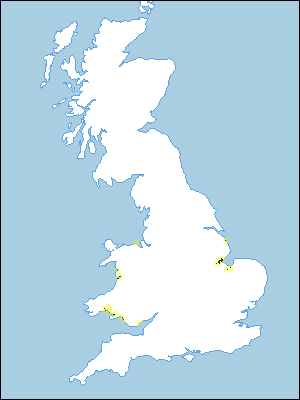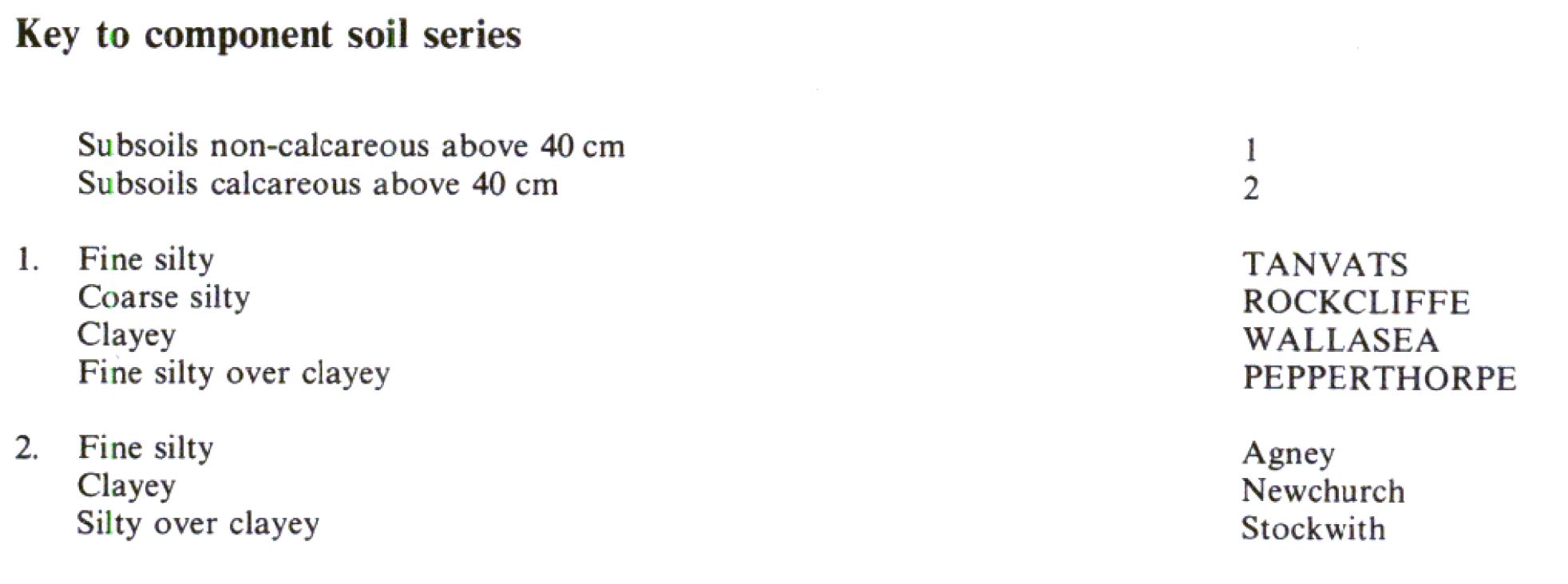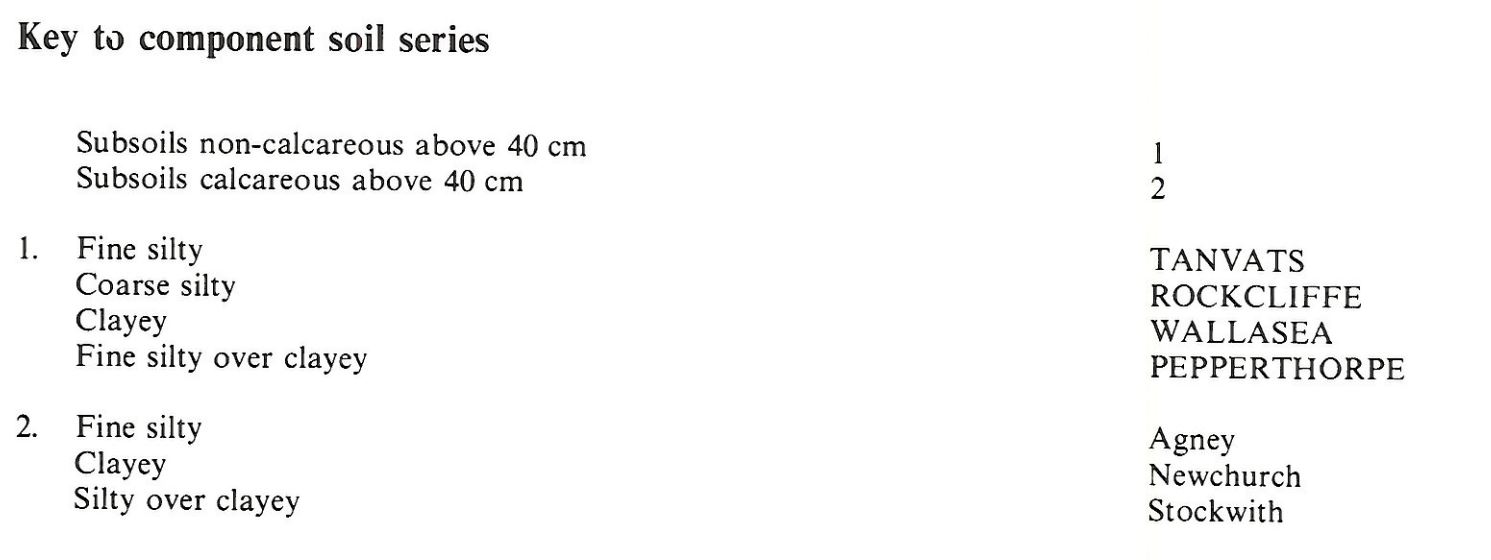
Soil Associations
0811e TANVATS
Soil and site characteristics
Deep stoneless fine and coarse silty and clayey soils with groundwater levels controlled by ditches and pumps. Flat land.
Geology
Marine alluvium
Cropping and Land Use
Cereals, sugar beet, potatoes and field vegetables in the Fens; stock rearing and dairying on permanent grassland in Wales.
Component soil series
| Subgroup | Series name | Percentage | WRB 2006 link |
|---|---|---|---|
| 8.11 | TANVATS | 35% | Fluvic Eutric Gleysols |
| 8.11 | PEPPERTHORPE | 25% | Fluvic Eutric Cambisols |
| 8.11 | ROCKCLIFFE | 15% | Fluvic Eutric Gleysols |
| 8.13 | WALLASEA | 15% | Clayic Fluvic Eutric Gleysols |
Covers 162 km2 in England and Wales
Soilscapes Classification
| 21 |
Loamy and clayey soils of coastal flats with naturally high groundwater |
0811e TANVATS
Detailed Description
The Tanvats association consists of stoneless, silty, silty over clayey and clayey soils developed in marine alluvium. Tanvats, Rockcliffe and Pepperthorpe series, typical alluvial gley soils and Wallasea series, pelo-alluvial gley soils are dominant. Calcareous Agney and Stockwith, Newchurch and sandy Everingham and Loggans series are locally present. The association occurs between 3 and 6 m O.D. on flat low-lying land around the Wash and in smaller estuaries in Wales. Locally in north-east Wales, the association consists almost entirely of Tanvats series, but Wallasea soils are more common in south Wales. It includes small patches of peaty soils around the Dovey estuary. Where there are nearby coastal sand dunes, the calcareous Loggans and non-calcareous Everingham soils also occur.
In Lincolnshire the association occurs south and south-east of Boston and near Saltfleet. Tanvats and Pepperthorpe series are the main soils, with Pepperthorpe series locally dominant and Wallasea series largely absent. The generally flat land often has small ridges marking the sites of former creeks. Rockcliffe series is the characteristic soil on the ridges but Agney series occurs locally where the alluvium is calcareous. The large proportion of non-calcareous silty soils reflects the original non-calcareous nature of the alluvium but near Boston where the land was settled and reclaimed early, these soils probably were originally calcareous but have since been leached. Soils with humose topsoils occur locally. Where there are nearby coastal sand dunes calcareous sandy Loggans soils are included.
Soil Water Regime
The soils are mainly waterlogged for long periods in winter (Wetness Class IV) but neglected land is severely waterlogged (Wetness Class V). In drier localities in north-east Wales where there is efficient field drainage and groundwater control, the soils are only seasonally waterlogged (Wetness Class III). Tanvats and Wallasea soils are non-droughty for all crops in south Wales but Tanvats soils are slightly droughty for most arable crops and moderately droughty for grass in north-east Wales.
In Eastern England these porous soils respond well to ditch and pipe drainage so they are occasionally waterlogged (Wetness Class II). Compaction caused by machinery can cause periods of temporary surface ponding but groundwater levels are well controlled by pumped drainage. Tanvats, Pepperthorpe and Wallasea soils are slightly to moderately droughty for the main arable crops but moderately to very droughty for grass. Rockcliffe soils are less droughty as they hold more available water.
Cropping and Land Use
Where these soils are drained there is ample opportunity for autumn cultivations in north-east Wales. In wetter south and west Wales, however, there are normally few days in autumn and spring when the soils can be worked without risk of structural damage. The soils are mainly under long term grassland or rough grazing, the latter being especially common near industrial complexes. In the north-east, where there are few Wallasea soils, there is some potential for horticulture or field vegetables though groundwater needs to be controlled. The risk of structural damage during spring cultivations is, however, considerable.
In Eastern England in most years there are good conditions for landwork in autumn when the soils can be worked for a long period. There are normally sufficient days for necessary spring operations. Crops include cereals, sugar beet, potatoes, peas and field vegetables, mainly brassicas. Under this intensive land use soil structural damage and compaction often occur, for example when harvesting root crops and vegetables in autumn and when heavy machinery is used for harvesting vining peas in wet conditions earlier in the year. Compaction can be alleviated by shallow subsoiling before seed bed preparation for the next crop. Available potassium levels are moderate and phosphorus status depends upon past management.
0811e TANVATS
Distribution Map
 |
Note that the yellow shading represents a buffer to highlight the location of very small areas of the association.
Keys to component soil series
Wales
 |
Eastern Region
 |
All information Copyright, Cranfield University © 2024
Citation: To use information from this web resource in your work, please cite this as follows:
Cranfield University 2024. The Soils Guide. Available: www.landis.org.uk. Cranfield University, UK. Last accessed 27/07/2024
